Here's the Tea
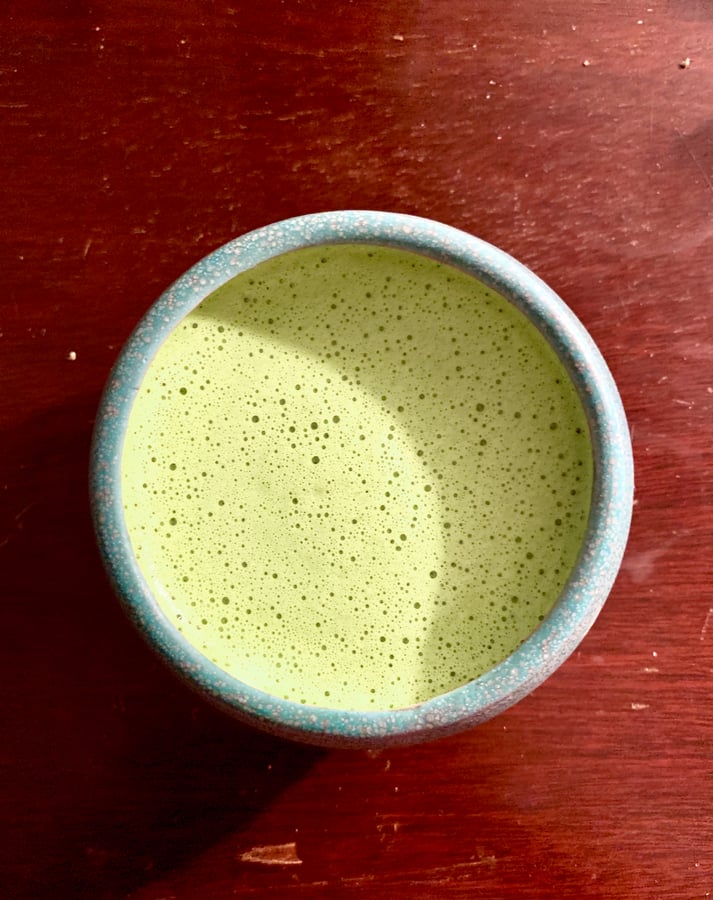
Every now and then it can be good for a person to take a short hiatus from drinking highly caffeinated coffee every morning. Like, for instance, if you find your entire body vibrating like a tuning fork, faced locked into a ghoulish rictus that can only communicate “I am not in control.” To any passersby which definitely did not happen to me recently.
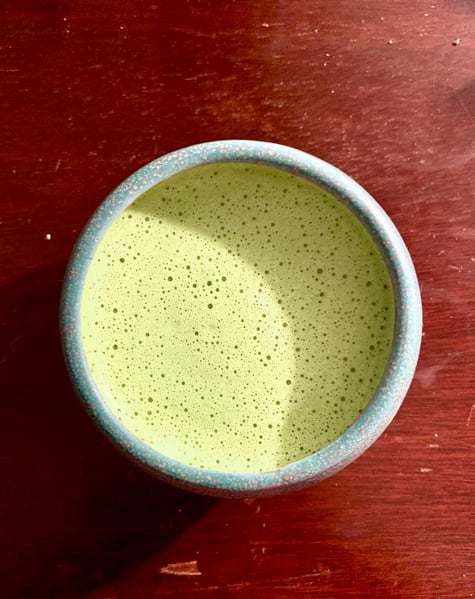
Whenever I take a break from coffee I like to let myself down easily by weening myself off with lower caffeine beverages instead of engaging in self harm by going cold turkey. One of my favorite moderately caffeinated beverages for this (or any) purpose is matcha green tea.
Matcha, for the uninitiated, is a Japanese tea preparation which is brewed using a powder made from green tea leaves, and which differs from most other tea preparations in that it does not get strained before consumption. The fact that the powdered tea leaves are consumed as part of the drink lends it a unique depth of flavor with a lot of nuance, and a much more luxurious body and texture than we normally associate with tea.
To me one of the most important things about brewing matcha is the temperature of the water you use. Green tea has more delicate flavors that can be destroyed if the water is too hot. For this reason you want to use water that's been off the boil for a while. If you have a thermometer, wait until your water has reached a temperature of 75 C, or 170 F. If you have a programmable PID controlled electric kettle, all the better.
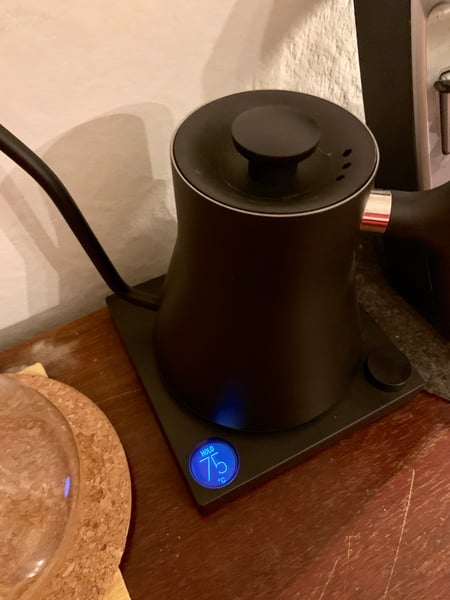
Matcha is traditionally made in a small wide bowl. This allows for the proper movement of the whisk during brewing to create the characteristic foamy head. Into your bowl, measure 2.5 grams of matcha powder (about 1.5 teaspoons)
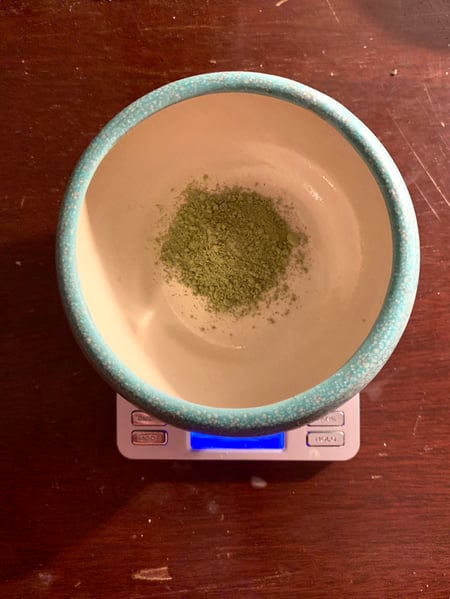
Once your powder is measured add about 30 grams of water, and use the whisk to incorporate the powder into the hot water, breaking up any clumps. Allow it to sit for about 20 seconds unperturbed. This process allows the powder to hydrate and begin releasing flavor before you add the final liquid.
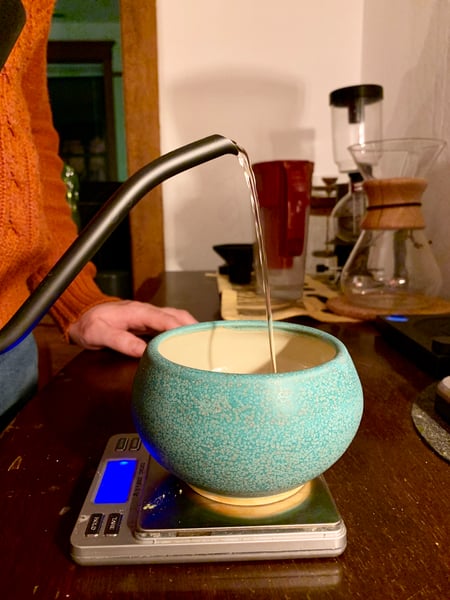
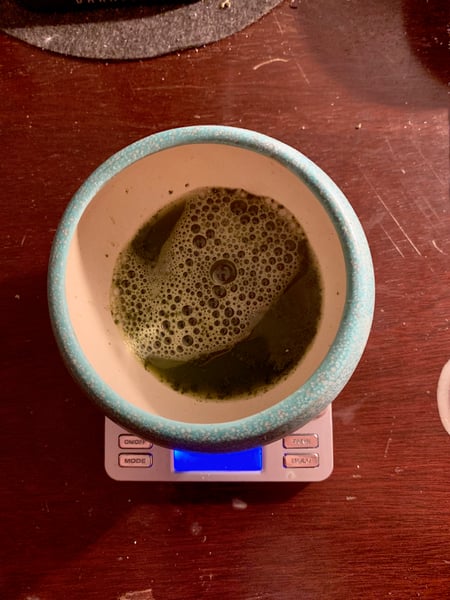
From here you can add another dose of water up to 250 grams, and froth it by drawing the whisk rapidly across the bowl in a ‘W’ pattern, slowly drawing the whisk out of the bowl as you go until you have a rich foam with very small bubbles. Now simply sip, and enjoy.
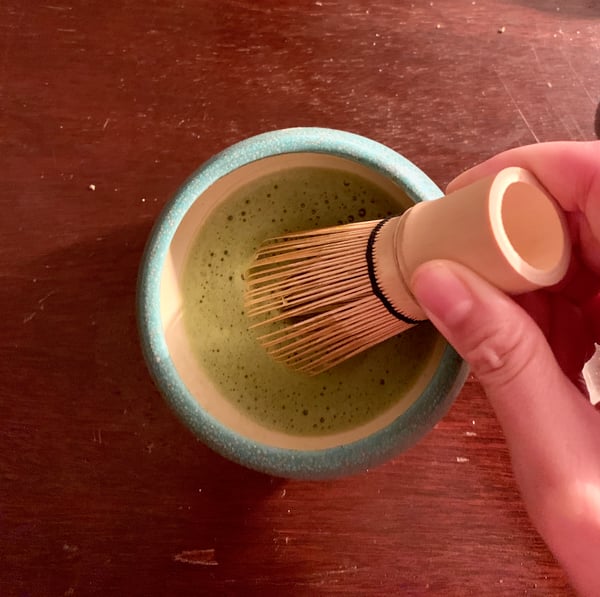
Alternatively you can whisk the matcha after the bloom without adding more water while you heat up your stovetop milk steamer (these things are more expensive than it seems like they ought to be, but they work pretty darn well).
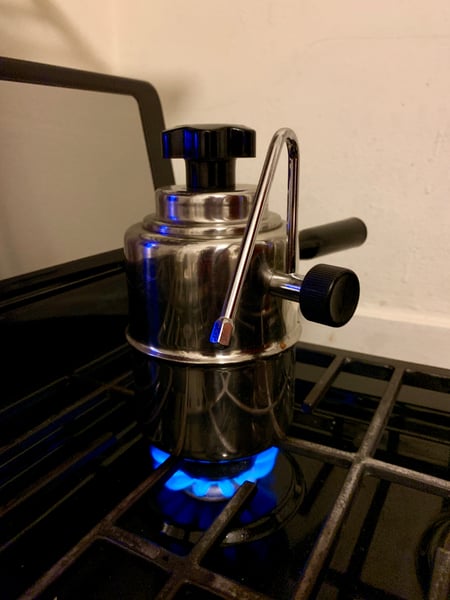
Steam your milk to a nice silky microfilm, pour into your frothed matcha, and enjoy your homemade bougie matcha latte.
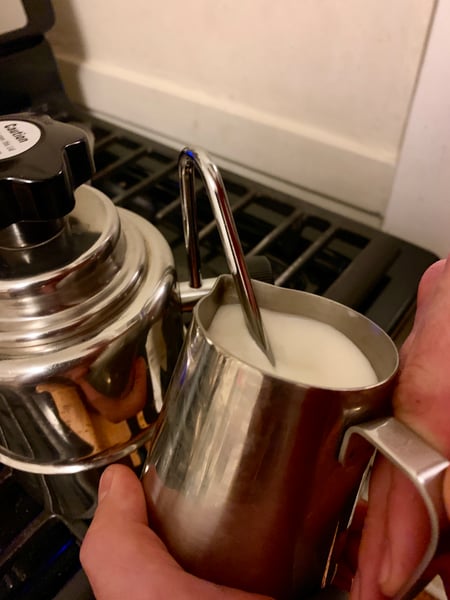
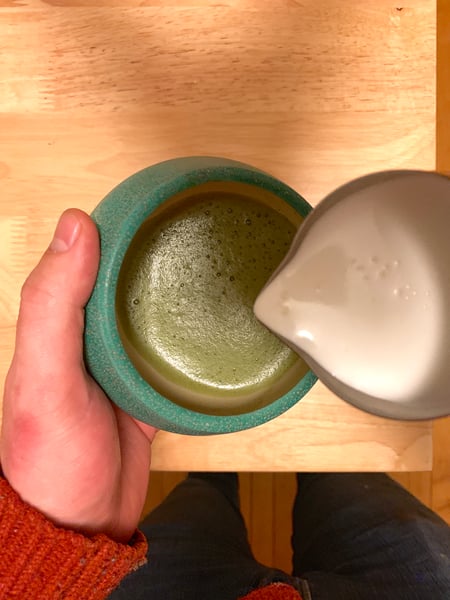
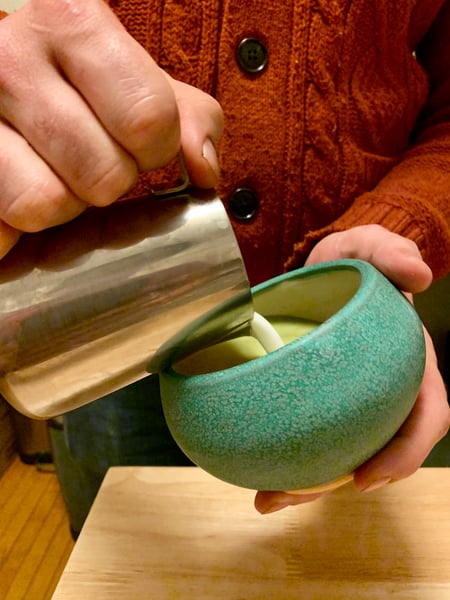
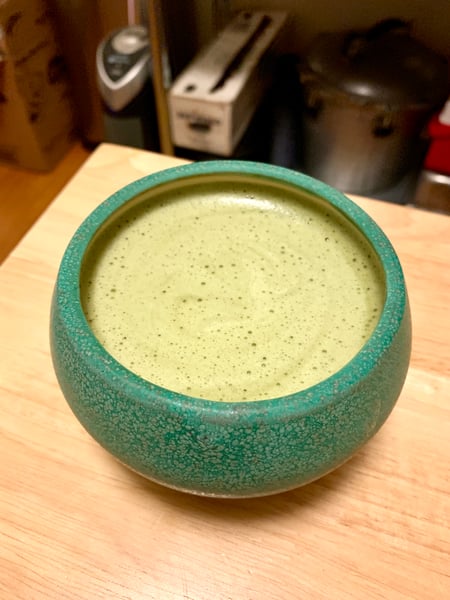
If you want to learn more about how to create restaurant or cafe quality food and drink at home be sure to check out one—or ideally many—of our classes. They are chock full of tips, tricks, know-how, and are guaranteed free from malarkey, rubbish, nonsense, and hogwash.

